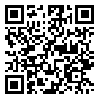1. American Psychiatric Association. Diagnostic and statistical manual of mental disorders (DSM-5). Washington, DC: American Psychiatric Pub; 2013.
2. Mostofsky SH, Powell SK, Simmonds DJ, Goldberg MC, Caffo B, Pekar JJ. Decreased connectivity and cerebellar activity in autism during motor task performance. Brain. 2009;132(9):2413–25. [
DOI]
3. Arabameri E, Sotoodeh MS. Early developmental delay in children with autism: a study from a developing country. Infant Behavior and Development. 2015;39:118–23. [
DOI]
4. Kasari C, Locke J, Gulsrud A, Rotheram-Fuller E. Social networks and friendships at school: comparing children with and without ASD. J Autism Dev Disord. 2011;41(5):533–44. [
DOI]
5. Lloyd M, MacDonald M, Lord C. Motor skills of toddlers with autism spectrum disorders. Autism. 2013;17(2):133–46. [
DOI]
6. Liu T, Breslin CM. Fine and gross motor performance of the MABC-2 by children with autism spectrum disorder and typically developing children. Res Autism Spectr Disord. 2013;7(10):1244–9. [
DOI]
7. Clark JE, Metcalfe JS. The mountain of motor development: a metaphor. In: Clark JE, Humphrey J; editors. Motor development: research and reviews. Reston, VA: NASPE Publications; 2002. [
DOI]
8. Stodden DF, Gao Z, Goodway JD, Langendorfer SJ. Dynamic relationships between motor skill competence and health-related fitness in youth. Pediatr Exerc Sci. 2014;26(3):231–41. [
DOI]
9. Barela JA. Fundamental motor skill proficiency is necessary for children's motor activity inclusion. Motriz: Rev Educ Fis. 2013;19(3):548–51. [
DOI]
10. Lang R, Koegel LK, Ashbaugh K, Regester A, Ence W, Smith W. Physical exercise and individuals with autism spectrum disorders: a systematic review. Res Autism Spectr Disord. 2010;4(4):565–76. [
DOI]
11. Healy S, Nacario A, Braithwaite RE, Hopper C. The effect of physical activity interventions on youth with autism spectrum disorder: a meta-analysis: Physical activity interventions. Autism Res. 2018;11(6):818–33. [
DOI]
12. Sorensen C, Zarrett N. Benefits of physical activity for adolescents with autism spectrum disorders: a comprehensive review. Rev J Autism Dev Disord. 2014;1(4):344–53. [
DOI]
13. Bremer E, Balogh R, Lloyd M. Effectiveness of a fundamental motor skill intervention for 4-year-old children with autism spectrum disorder: a pilot study. Autism. 2015;19(8):980–91. [
DOI]
14. Bremer E, Lloyd M. School-based fundamental-motor-skill intervention for children with autism-like characteristics: an exploratory study. Adapt Phys Activ Q. 2016;33(1):66–88. [
DOI]
15. Debolt L, Clinton EA, Ball A. The effects of an adapted physical education program on children with autism. Kentucky Newslett Health Phys Educ Recreat Dance. 2010;47(1):24–7.
16. Ketcheson L, Hauck J, Ulrich D. The effects of an early motor skill intervention on motor skills, levels of physical activity, and socialization in young children with autism spectrum disorder: a pilot study. Autism. 2017;21(4):481–92. [
DOI]
17. Colombo-Dougovito AM, Block ME. Fundamental motor skill interventions for children and adolescents on the autism spectrum: a literature review. Rev J Autism Dev Disord. 2019;6(2):159–71. [
DOI]
18. Duronjić M, Válková H. The influence of early intervention movement programs on motor skills development in preschoolers with autism spectrum disorder (case studies). Acta Univ Palacki Olomuc, Gymn. 2010;40(2):37–45. [
DOI]
19. Bedard C, Bremer E, Campbell W, Cairney J. Evaluation of a direct-instruction intervention to improve movement and preliteracy skills among young children: a within-subject repeated-measures design. Front Pediatr. 2018;5:298. [
DOI]
20. Ulrich DA. Test of gross motor development. Profile/examiner record form. Second edition. Austin, Tex: PRO-ED; 2000.
21. Soltanian MA, Farokhi A, Ghorbani R, Jaberi AA, Zarezade M. Evaluation of the reliability and construct validity of test of gross motor development-2 (Ulrich 2) in children of Semnan province. Koomesh. 2013;14(2):200–6. [Persian] [
Article]
22. Ghayour Najafabadi M, Sobh-Rhakhshankhah A, Niyazi S. The Effect of Selected Exercise Group on Motor Skills and Cognitive Functions in Children With Autism Spectrum Disorders. Journal of Exercise Science and Medicine. 2019 Jul 1;11(2):105-12.[Persian] [
DOI]
23. Bremer E, Crozier M, Lloyd M. A systematic review of the behavioural outcomes following exercise interventions for children and youth with autism spectrum disorder. Autism. 2016;20(8):899–915. [
DOI]

 ، الهه عرب عامری*2
، الهه عرب عامری*2 
 ، معصومه شجاعی3
، معصومه شجاعی3 




